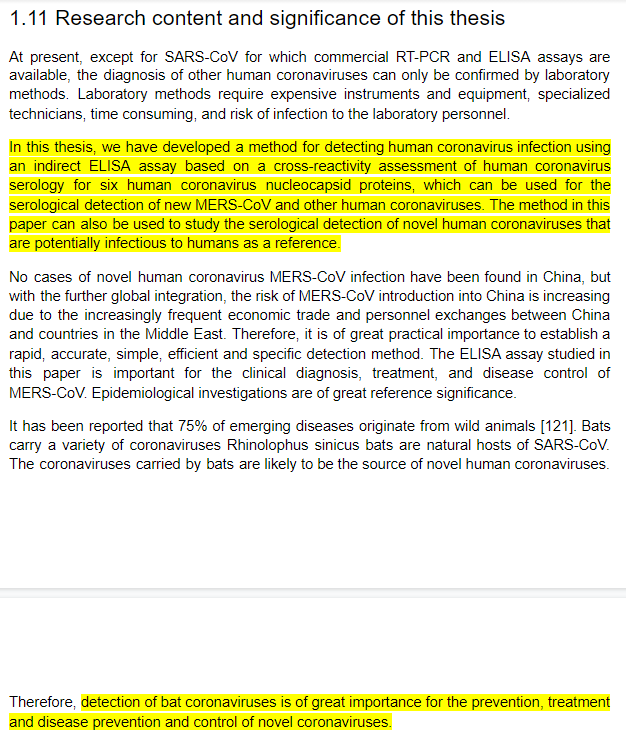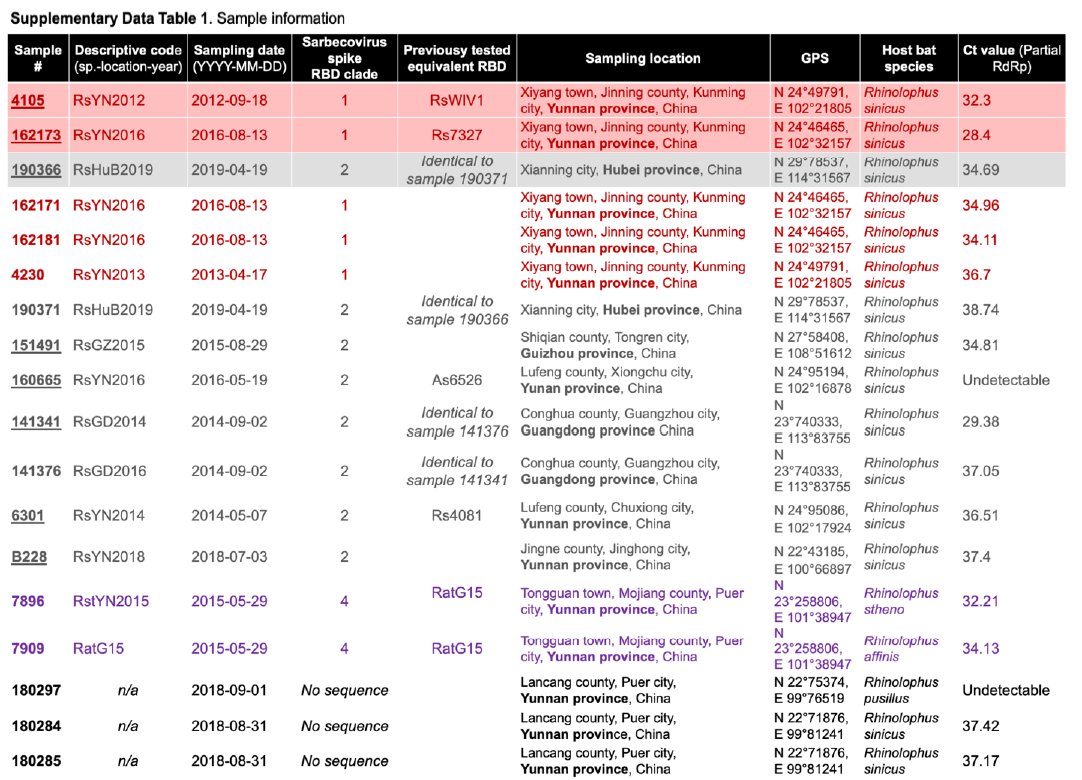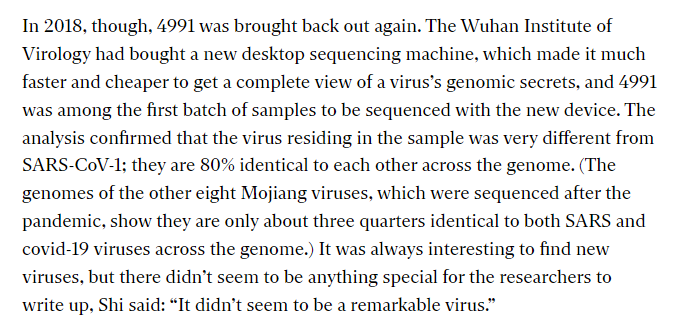[Thread] New WIV theses found by @TheSeeker268. Let's make some comments on very important findings
https://twitter.com/TheSeeker268/status/1392575191763472388
1/ MSc thesis of Wang, 2nd co-author of the article of the first 4 trips to the mine (Ge et al., 2016), and dated 2 years before this article and can be considered as some of the first steps of this research
https://twitter.com/TheSeeker268/status/1392575200445698049
She states that "fever patient sera were obtained from a hospital in Yunnan Province". Very vague description! But later, in the Fig 2.6 there is an important clue: samples are named as "MJ123", using one of WIV standard naming formats...
https://twitter.com/TheSeeker268/status/1392575213229936640
2 letters plus 3 digits for correlative IDs. Those two letters represent the initials of the syllables of the location. We have seen that in other publications: JN (JinNing), WH (WuHan), FG (FuGong). There is no doubt MJ is Mojiang. They were screening the county for more cases! 

This is also very important to understand the kind of test they could have made on miner's samples and on suspected cases in Mojiang, and the problems they faced 



This also shows they had sequenced the N protein of 4991 and other viruses but decided not to disclose two years later in Ge et al. (2016)

https://twitter.com/TheSeeker268/status/1392575229159870465

If there was still any doubt, this thesis clearly shows that sample 3755 came from the mine. And not only they sequenced the N, they also sequenced the S, which it is still unpublished. Fig 3.1
May be @c_drosten can help here?

May be @c_drosten can help here?
https://twitter.com/franciscodeasis/status/1354443405447876610

They only obtained partial sequences and faced some problems, probably due to inappropriate primers. DRASTIC already hypothesize this last summer and have a long discussion. This can explain the delay in finding the cause of the miners outbreak

https://twitter.com/franciscodeasis/status/1290452844164907011

2/ PhD thesis of Zeng, quite relevant also. Can be considered the precursor of the crucial article of Hu et al. (2017), published a few months later
https://twitter.com/TheSeeker268/status/1392575246843080704
The abstract explains and lists quite well live isolates and infectious clones obtained. Much better than Hu et al. (2017), in fact. If anyone still had doubts: Rs4874 was not a pure live isolate but a infectious clone. This was the "optimized protocol"!


https://twitter.com/franciscodeasis/status/1388506356928372737


3/ MSc thesis of Yu, precursor of Yu et al. (2019) (link below). It shows very important data regarding 4991 and clade 7896. And a new important clade to follow: clade 8561
ncbi.nlm.nih.gov/pmc/articles/P…
ncbi.nlm.nih.gov/pmc/articles/P…
Pay close attention to Table 3.2.
It is a way to check if RaTG13 aa seq is real! (note: not for validating nt seq). Here the results and the errors.
Big deviation in the S of 4991!
Notes:
- ORF8 gene not easily comparable
- they truncate to 1st decimal

It is a way to check if RaTG13 aa seq is real! (note: not for validating nt seq). Here the results and the errors.
Big deviation in the S of 4991!
Notes:
- ORF8 gene not easily comparable
- they truncate to 1st decimal
https://twitter.com/TheSeeker268/status/1392575296646180868


Also pay atention to a new virus: Rs8561. Its identities (vs Tor2) correlate very well with Ra4991, so they could be somehow similar. In fact, it is the 3rd closest WIV clade to SARS-CoV-2 according to the RdRp disclosed by Latinne et al. (2020)

https://twitter.com/Biol4Ever/status/1392588959226679297

They had the spikes of the clade 7896 and other parts of the genome. Still unpublished. It would be worth it if an expert tried to extract information from these primers
https://twitter.com/TheSeeker268/status/1392575306507034624
Fig 3.5 [ORF8] of Yu (2019), manually OCR by @Drinkwater5Reed
- Ra4991 ORF8 is 100% identical to RaTG13 ORF8 at nt level
- Rspp7896, Ra7909 and Rspp7952 have very novel ORF8
pastebin.com/ug9Kb6YZ
- Ra4991 ORF8 is 100% identical to RaTG13 ORF8 at nt level
- Rspp7896, Ra7909 and Rspp7952 have very novel ORF8
pastebin.com/ug9Kb6YZ
• • •
Missing some Tweet in this thread? You can try to
force a refresh


























